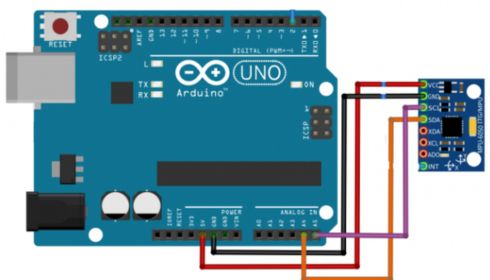In today’s rapidly evolving digital landscape, the gyroscope sensor has become a vital component in many modern devices and systems. From smartphones to aircraft, this tiny yet powerful sensor plays an essential role in measuring and maintaining orientation. Whether you’re a tech enthusiast or simply curious about how your mobile phone knows which way it’s facing, understanding the workings of a gyroscope sensor is both fascinating and useful.
What is a Gyroscope Sensor?
A gyroscope sensor, often simply called a gyroscope, is a device used to measure angular velocity and maintain orientation. It operates on the principle of conservation of angular momentum, which states that a spinning object will maintain its direction unless acted upon by an external force. In practical terms, this means a gyroscope can detect changes in rotational motion.
There are different types of gyroscopes, including mechanical, optical, and MEMS (Micro-Electro-Mechanical Systems) gyroscopes. Among these, MEMS gyroscopes are the most common in consumer electronics due to their small size, low cost, and high accuracy.
How Does a Gyroscope Work?
The basic functioning of a gyroscope sensor involves detecting rotational movement around a particular axis. For example, in smartphones, gyroscopes work in tandem with accelerometers to provide more precise motion data. While accelerometers measure linear movement (like tilting), gyroscopes measure rotational movement (like spinning).
When the device moves or rotates, the gyroscope senses the rate of rotation and sends this data to the processor. This information is crucial for various applications like screen orientation adjustment, navigation, and gaming.
Applications of Gyroscope Sensors
- Smartphones and Tablets: Gyroscopes in mobile devices help enhance user experience by enabling motion-sensitive gaming, augmented reality apps, and auto-rotation of the screen. They also work with GPS for improved navigation.
- Automotive Systems: Modern vehicles use gyroscope sensors in electronic stability control systems. These sensors help detect skidding and enable corrective action by adjusting brake force or engine output.
- Aerospace and Aviation: In aircraft, gyroscopes are crucial for navigation and stability. They help pilots maintain orientation even when visual references are lost, such as during fog or night flying.
- Drones and Robotics: Drones rely heavily on gyroscope sensors to maintain balance and direction during flight. Similarly, robots use them to navigate spaces accurately without bumping into objects.
- Virtual Reality (VR) and Gaming: VR headsets and advanced gaming consoles use gyroscopes to track head movements and deliver immersive experiences. This ensures that the virtual world responds fluidly to the user’s actions.
- Medical Devices: Some modern medical tools use gyroscopes to track movement and improve precision, especially in surgery or physical therapy equipment.
Benefits of Using a Gyroscope Sensor
- Precision: Gyroscopes provide accurate measurements of rotational movement, making them ideal for high-performance applications.
- Compactness: MEMS gyroscopes are extremely small, allowing for integration into compact electronic devices.
- Cost-effective: With advances in manufacturing, gyroscope sensors have become more affordable, enabling their use in a wide range of consumer products.
Future Trends
As technology continues to evolve, the role of gyroscopes is expected to grow. Future smartphones, wearable devices, and autonomous systems will likely depend more heavily on this technology. Innovations like gesture control, indoor mapping, and advanced robotics will benefit immensely from improved gyroscope accuracy and integration.
Conclusion
The gyro sensor is more than just a technical component—it’s a cornerstone of modern technology. Its ability to detect orientation and movement with high precision makes it indispensable in a wide variety of applications. From enhancing user experience in smartphones to ensuring safety in aerospace and automotive industries, the gyroscope is a silent hero in the background of our digital lives.




